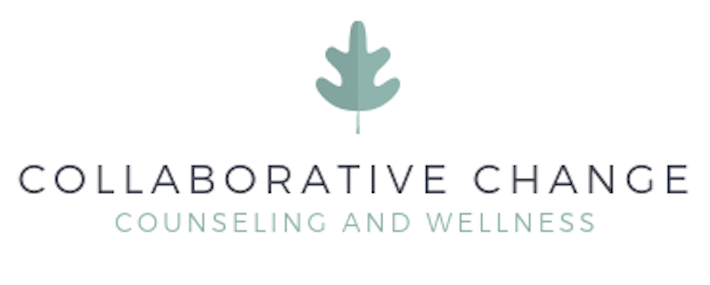Many people suffer from mental health conditions. More than one in five adults have some mental illness with symptoms ranging from mild to severe. That amounts to around 57.8 million people in the United States.
Some individuals find that cognitive behavioral therapy effectively treats the symptoms of their health condition. There are many cognitive behavioral therapy techniques that healthcare professionals use.
These methods are designed to change problematic thought patterns. By shifting automatic negative thoughts, people can improve the symptoms they experience.
This guide will discuss what cognitive behavioral therapy is. We’ll go into the various methods used and how they help patients overcome their difficulties.
What Is Cognitive Behavioral Therapy?
Cognitive behavioral therapy is a goal-oriented and structured form of talk therapy. It is used to alleviate the symptoms of some mental health conditions, including:
- Depression
- Anxiety
- Marital problems
- Addiction issues
- Stress, grief, or other emotional concerns
One of the assumptions behind cognitive behavioral therapy is that the individual has developed negative and unhelpful behavior and thought patterns. Mental health professionals work to identify these patterns. Their goal is to motivate their clients to change their thinking.
There are a few different types of cognitive behavioral therapy, including:
- Dialectical Behavioral Therapy: Incorporating strategies like mindfulness and emotional regulation into treatment
- Cognitive Therapy: Identifying and changing negative behaviors, thought patterns, and emotional responses
- Rational Emotive Behavior Therapy: Challenging irrational beliefs and changing those patterns
What Are the Cognitive Behavioral Therapy Techniques?
The cognitive behavioral therapy techniques a mental healthcare provider implements depend on the unique needs and goals of their client. Your therapist will decide which tactics to employ after speaking with you and learning about the issues you need to overcome.
Recognizing Negative Thought Patterns
As we’ve mentioned, identifying negative thought patterns and behaviors is a key pillar of cognitive behavioral therapy. This technique can be challenging for those who have a hard time with introspection. Introspection refers to looking internally to examine the following things about yourself:
- Perceptions
- Emotions
- Judgments
- Thoughts
With this technique, you and your therapist will gain insight into your pattern of thoughts, feelings, and behaviors and how your treatment program can progress.
Journaling
Therapeutic journaling is an effective cognitive behavioral therapy technique. This type of journaling is more than writing down whatever’s on your mind.
The purpose behind journaling is to write down your automatic thoughts, your feelings, and any action taken on those thoughts and feelings. From there, you and your therapist can determine what patterns of thinking and responding are ineffective, or even harmful for you.
Cognitive Restructuring
Once the negative thought patterns have been identified, either through journaling or another technique, it’s time to restructure them.
For example, say you assume no one will ever want to be your friend. Believing this can affect your actions. You may stop interacting with people as much or going out when invited. You may withdraw and isolate. In some scenarios, this negative thought pattern can become a self-fulfilling prophecy. People observing you think that you may not want to be around others, so they back off, leading you to feel confirmed that people do not want to be your friend.
Your therapist will talk to you about what your thought process is in situations like this. Once you’ve determined what your negative thought patterns are, you’ll learn how to reframe them. Your thoughts will become more productive and reasonable..
Setting Goals
Setting goals is a great way to change your life and health. Your therapist can help you strengthen and build your skills surrounding goal-setting.
Some things you might learn include:
- Setting short and long-term goals
- Focusing on the process of goal-setting
- Pick out rewards when you hit certain milestones
Exposure Therapy
Exposure therapy is often used to address phobias and fears. The idea is that you can’t overcome your anxiety by avoiding certain situations. This technique is effective for those dealing with:
- Obsessive-compulsive disorder (OCD)
- Post-traumatic stress disorder (PTSD)
- Anxiety
You’ll get slowly exposed to things that provoke anxiety or fear. Your therapist will provide you with guidance on how to deal with these scenarios at the moment. Clients will confront their fears to discover that they won’t harm them.
Problem-Solving Techniques
Developing problem-solving skills will help you recognize and solve problems you might encounter. These skills can assist you with decreasing the negative impact these issues might have.
There are five steps typically involved in problem-solving, including:
- Pinpointing a problem
- Creating a list of different solutions
- Evaluating the pros and cons of each solution
- Picking a solution
- Implementing the solution
This technique gets you to slow down and pragmatically look at a problem instead of immediately reacting to it. Being methodical in your approach to the issue can reduce the negative thoughts you have about it.
Relaxation
Relaxation techniques are effective at reducing the symptoms of anxiety. They can also help you overcome stressful situations. Some relaxation methods are:
- Deep breathing
- Yoga
- Meditation
- Muscle relaxation
You can use some of these methods to reduce your anxiety at a particular moment. You’ll feel more in control of the situation once you get your stress levels down.
Role-Playing
Role-playing enables you and your therapist to work through specific situations. You can play out various scenarios and their outcomes in a safe environment. Role-playing can be used for the following things:
- Practicing your social skills
- Becoming more assertive
- Improve your communication
- Increase your problem-solving skills
- Boosting your self-confidence in different scenarios
Feelings Charts
A feelings chart is effective when a therapist is working with children and young adults. Some adults find it challenging to identify their emotions in different situations.
These charts usually list 16 emotions. There is also a correlating face that exhibits whatever feeling it’s attached to. Some of the emotions you might find in a feelings chart include:
- Grumpy
- Happy
- Peaceful
- Annoyed
- Thankful
- Shy
- Upset
This tool gives people a name to a feeling they might find hard to describe. They’re a great option for those who have a limited vocabulary.
Find a Therapist Who Specializes in Cognitive Behavioral Therapy
Many cognitive behavioral therapy techniques can help you overcome your negative thought patterns. An experienced mental health professional will guide you through the process. They’ll provide support and guidance as needed as you navigate your mental health condition.
Collaborative Change Counseling and Wellness is here to help. We offer a wide range of therapy services, including telemedicine. Get in touch to schedule a free 15-minute consultation.


